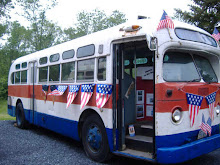Some interesting information from John Adams, retired from Greyhound where he served as a driver, dispatcher, and supervisor as far back as the 40'
FAGEOL -- In 1921 Frank and William Fageol of Oakland, California, manufactured the first real intercity type bus. It had 22 seats with five doors opening on the right side. There was no center aisle. Drivers remembered it as the "flat bottom Fageol". Early models carried the gas tank along the roof above the driver's head. Over curving roads, the sloshing gas soon developed vapor lock which was remedied only after the driver climbed to the top of the bus to blow into the tank. The Fageol seated 29.
The Fageol was fondly remembered by older drivers. It held its place on the roads until the Streamliner replaced it in 1933. One of the first buses to use air brakes, it carried mechanical brakes in front and air brakes on the rear, with steel shoes that lit the night with rings of fire whenever the brakes were applied. It roared as it climbed the hills, and snorted as it came back down. The roar of its straight exhaust could be heard reverberating from the distant hills and valleys for many minutes and quite a few miles after it had passed through town. It had plenty of speed, but usually required ten miles to get wound up.
The Fageol began it's exodus in the early thirties when the Streamliner was coming in. But the Fageol had served well. It had been the workhorse during the twenties and early thirties, and had gained the fond admiration of every driver on the road. It had established itself as a "mud puller" over miles of roads that had never seen pavement. It had carried drivers over many miles of unmarked dirt and gravel roads, and had never heard the siren or seen the red light of the Highway Patrol, since those patrols were only beginning to come in as the Fageol was going out. The Fageol could roll, and did roll, in a day when schedules were often faster than in later years. It carried many thousands of people across the United States, and kept right on rolling for drivers who were so mile weary they could no longer see the radiator cap on the hood. The Fageol's day was before ICC regulations, and like the weary cowboy's pony, the Fageol continued on as long as her driver had strength left to set in the driver's seat.
Saturday, May 1, 2010
Subscribe to:
Post Comments (Atom)

No comments:
Post a Comment